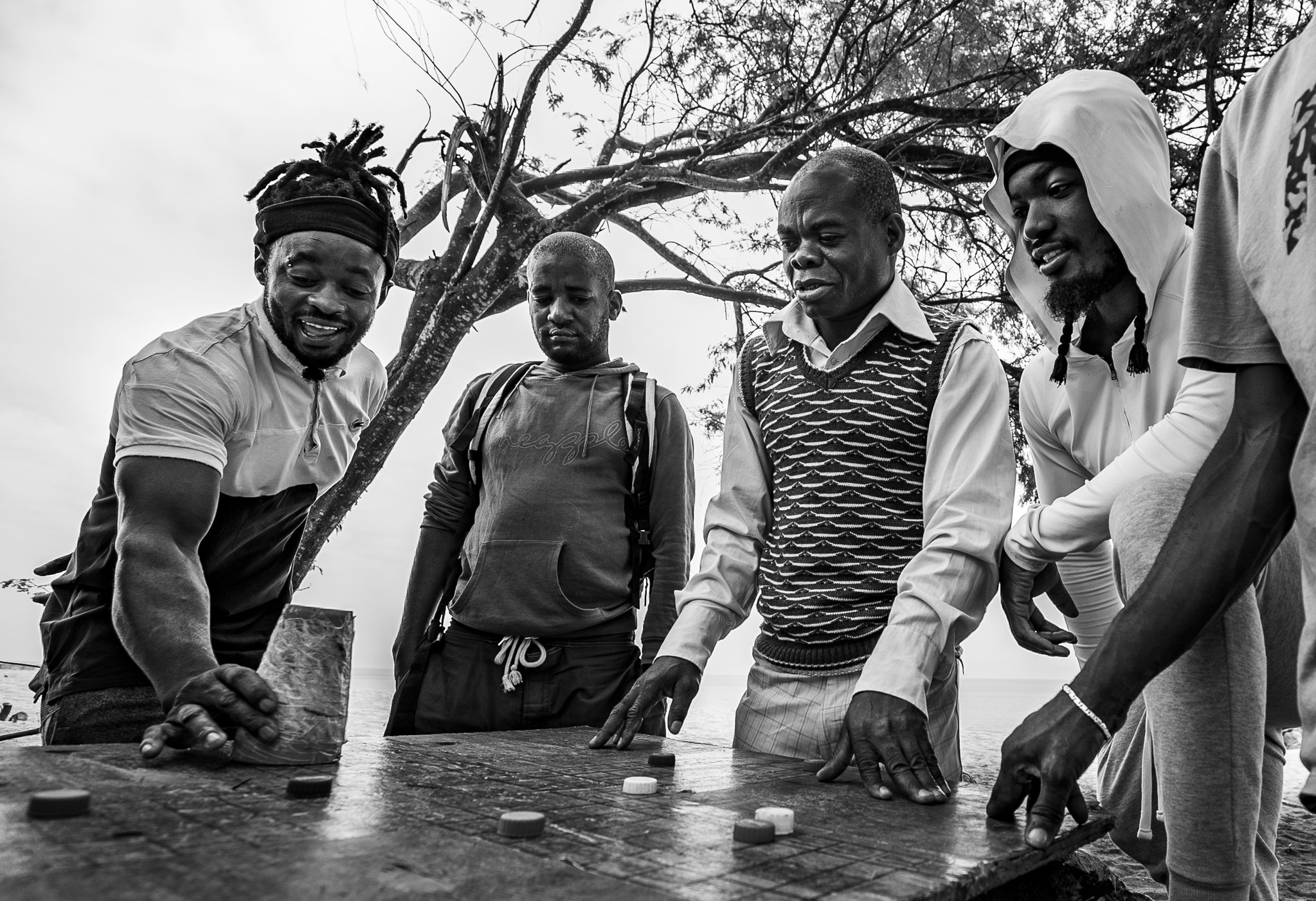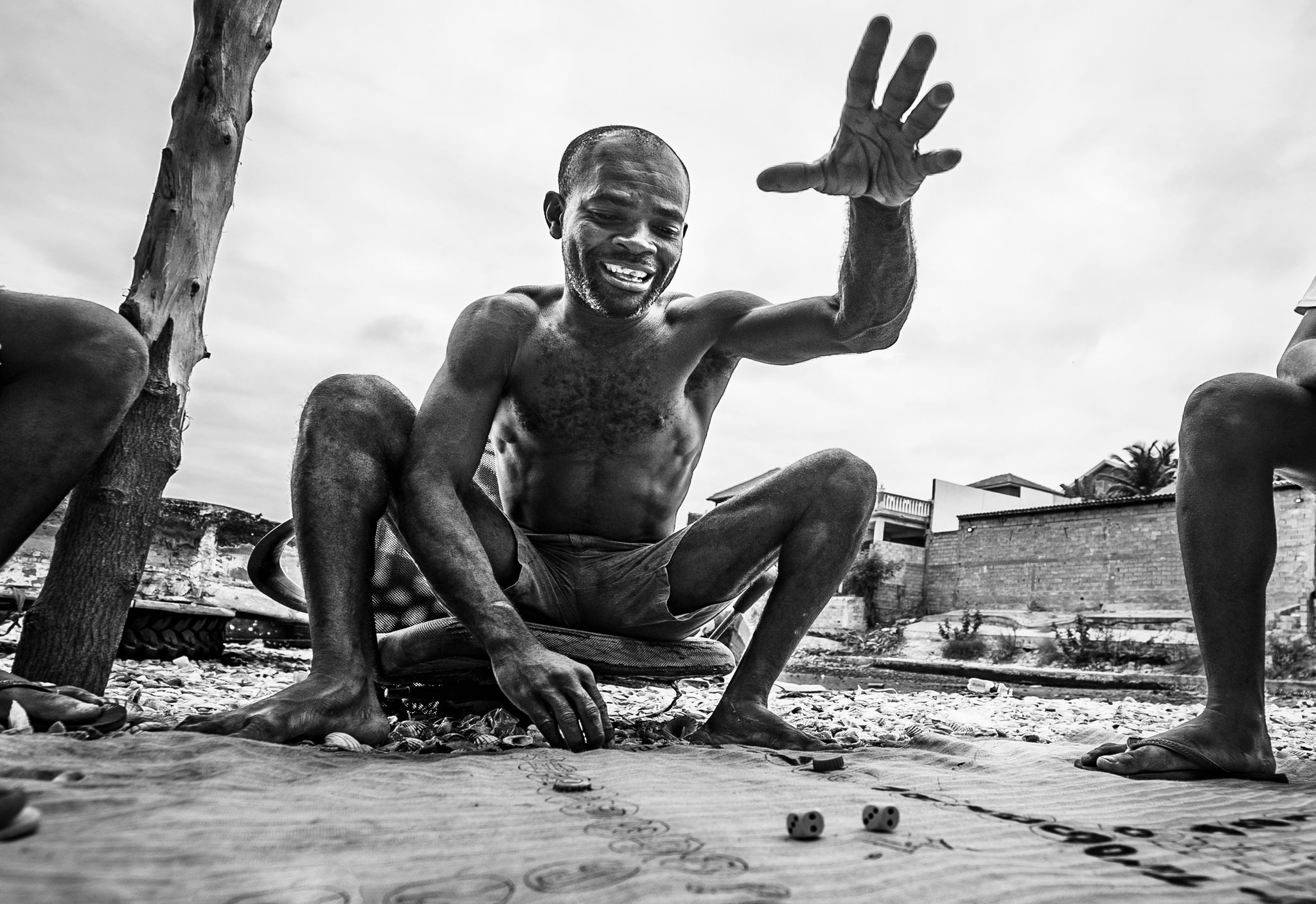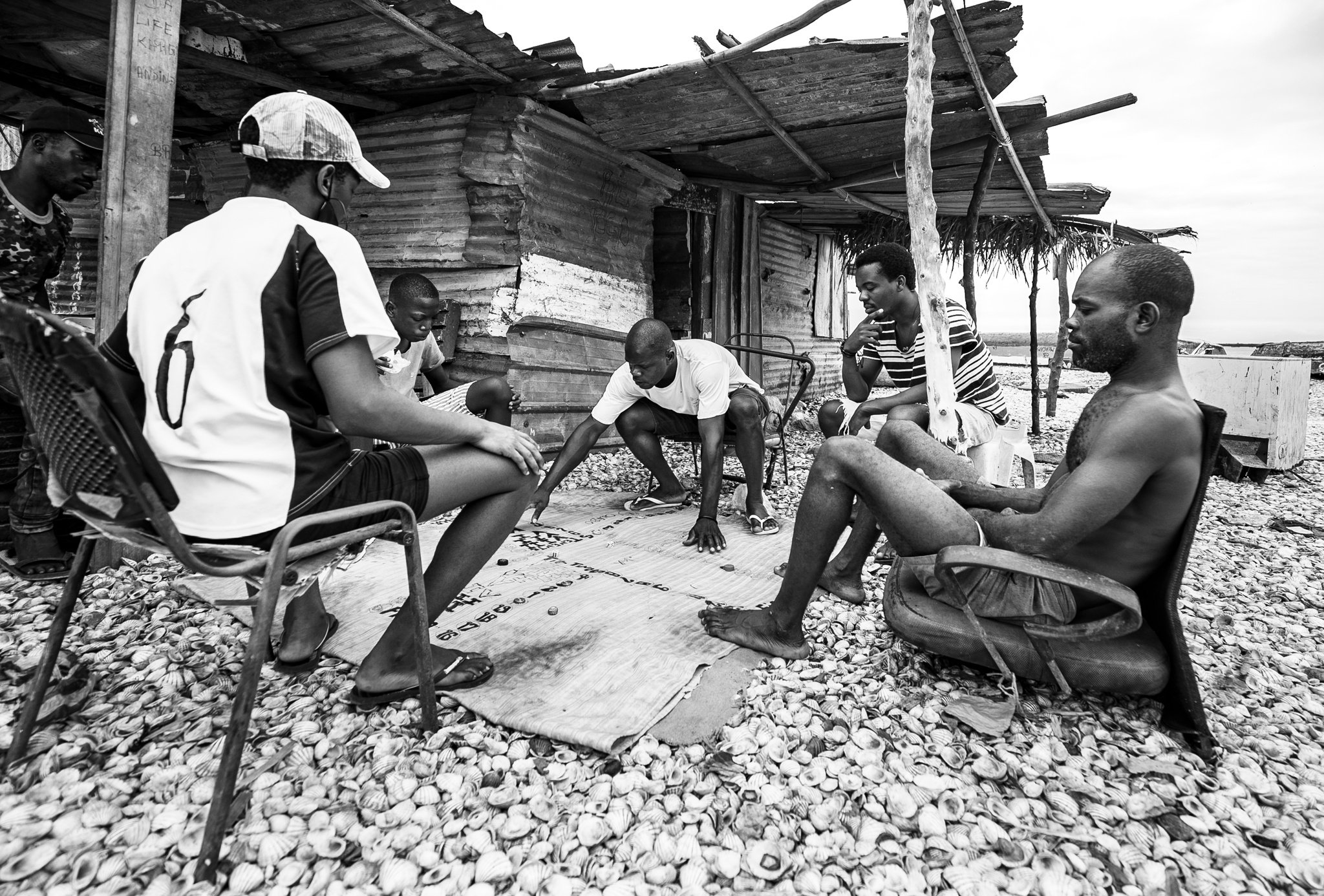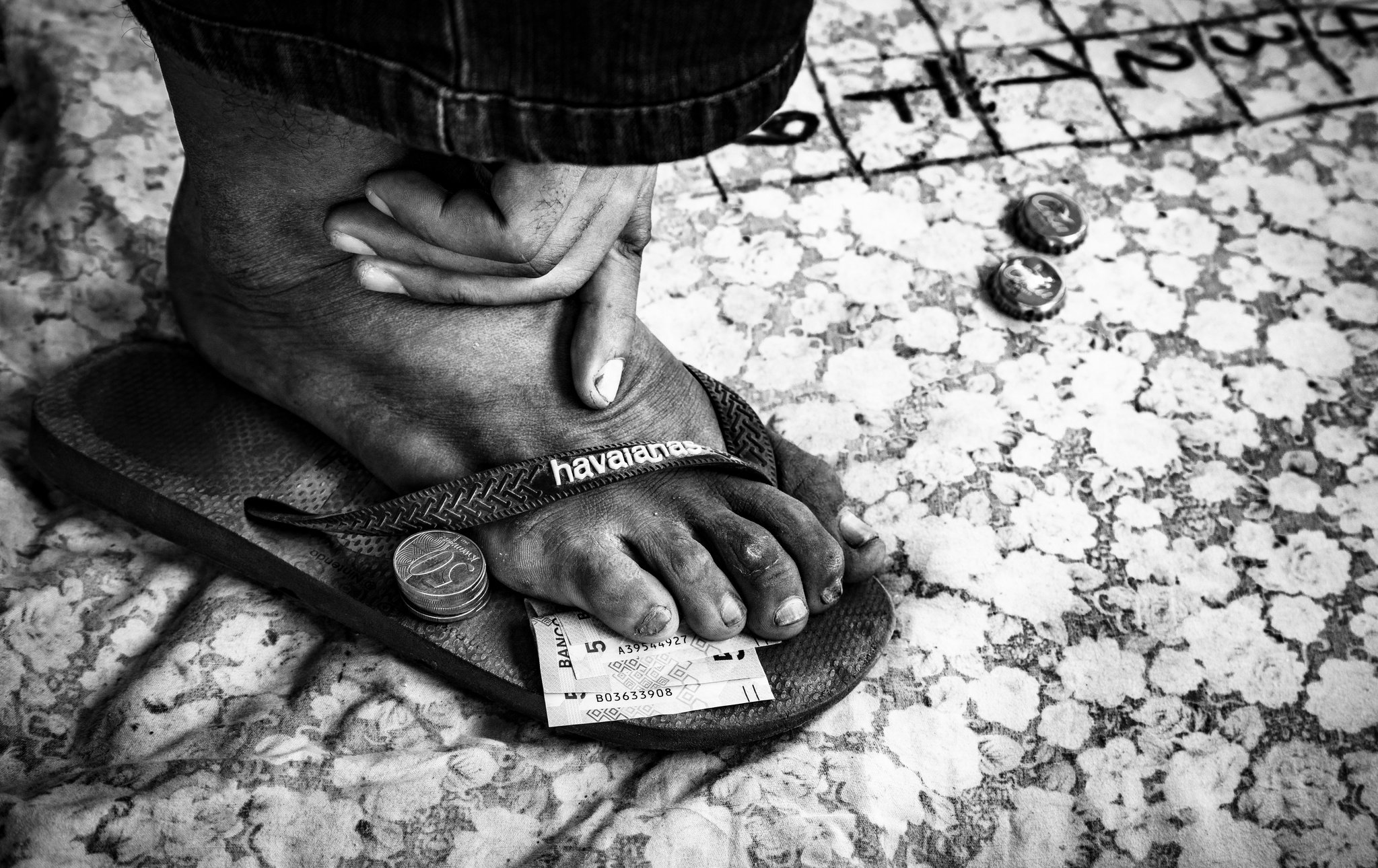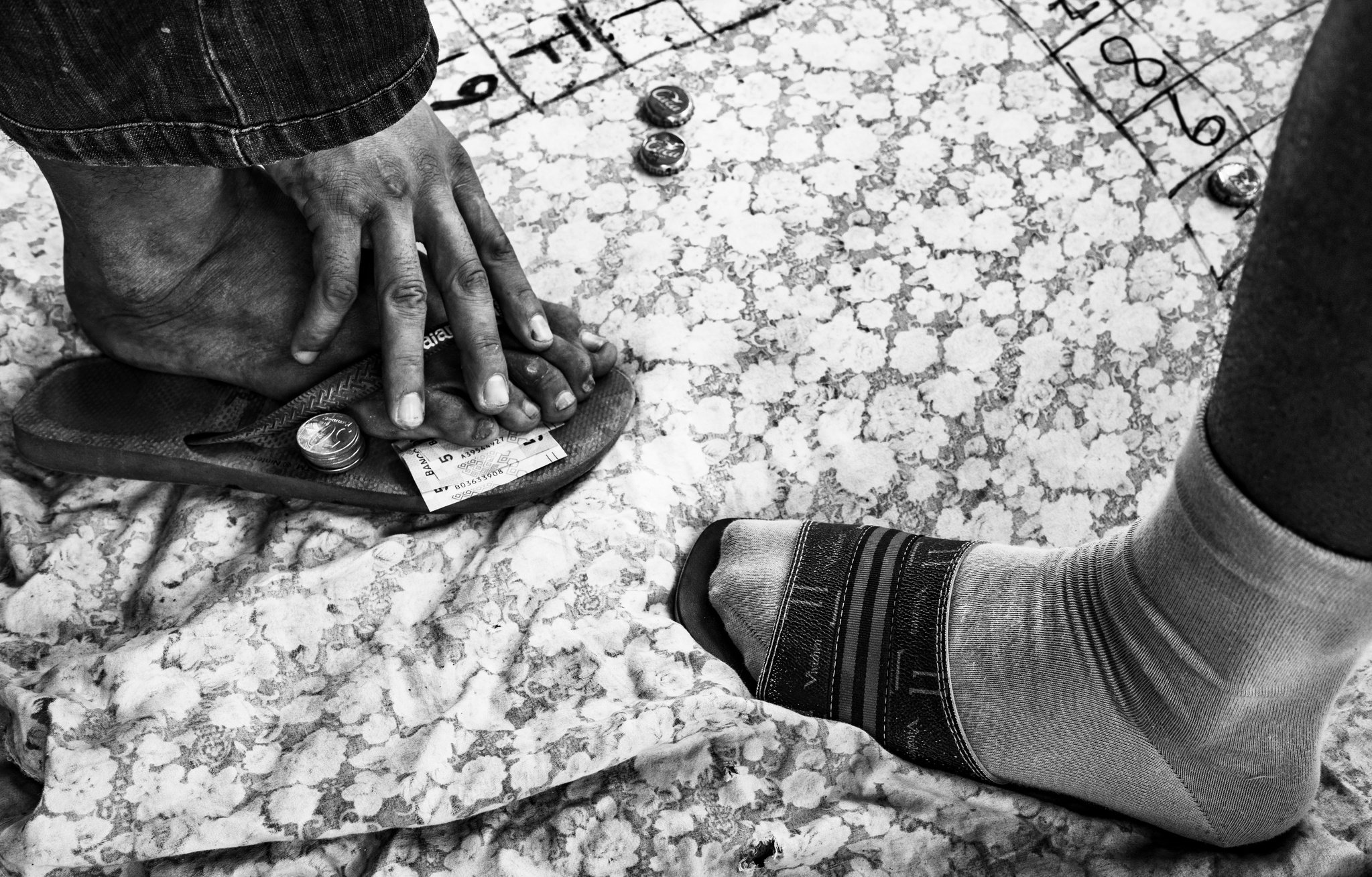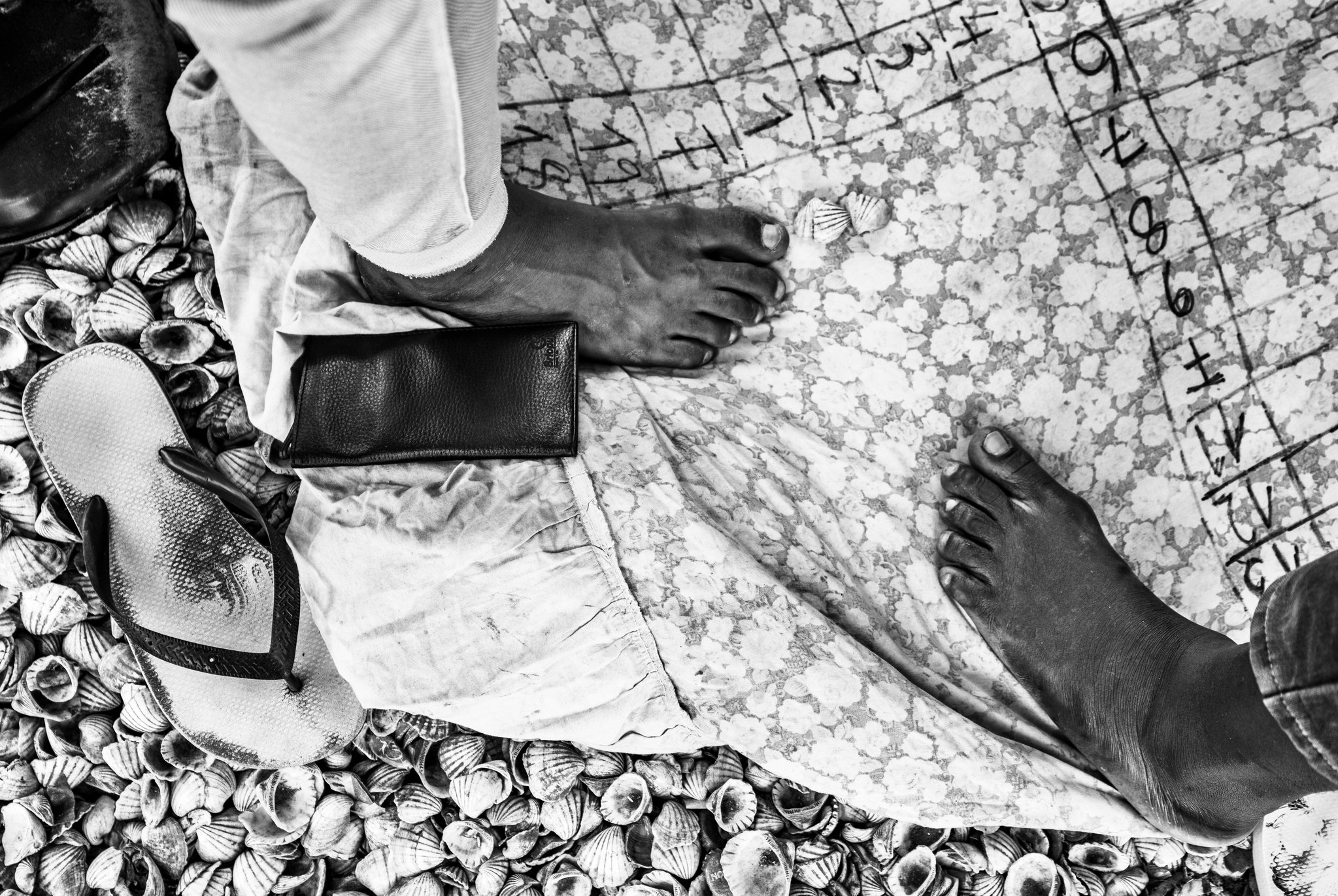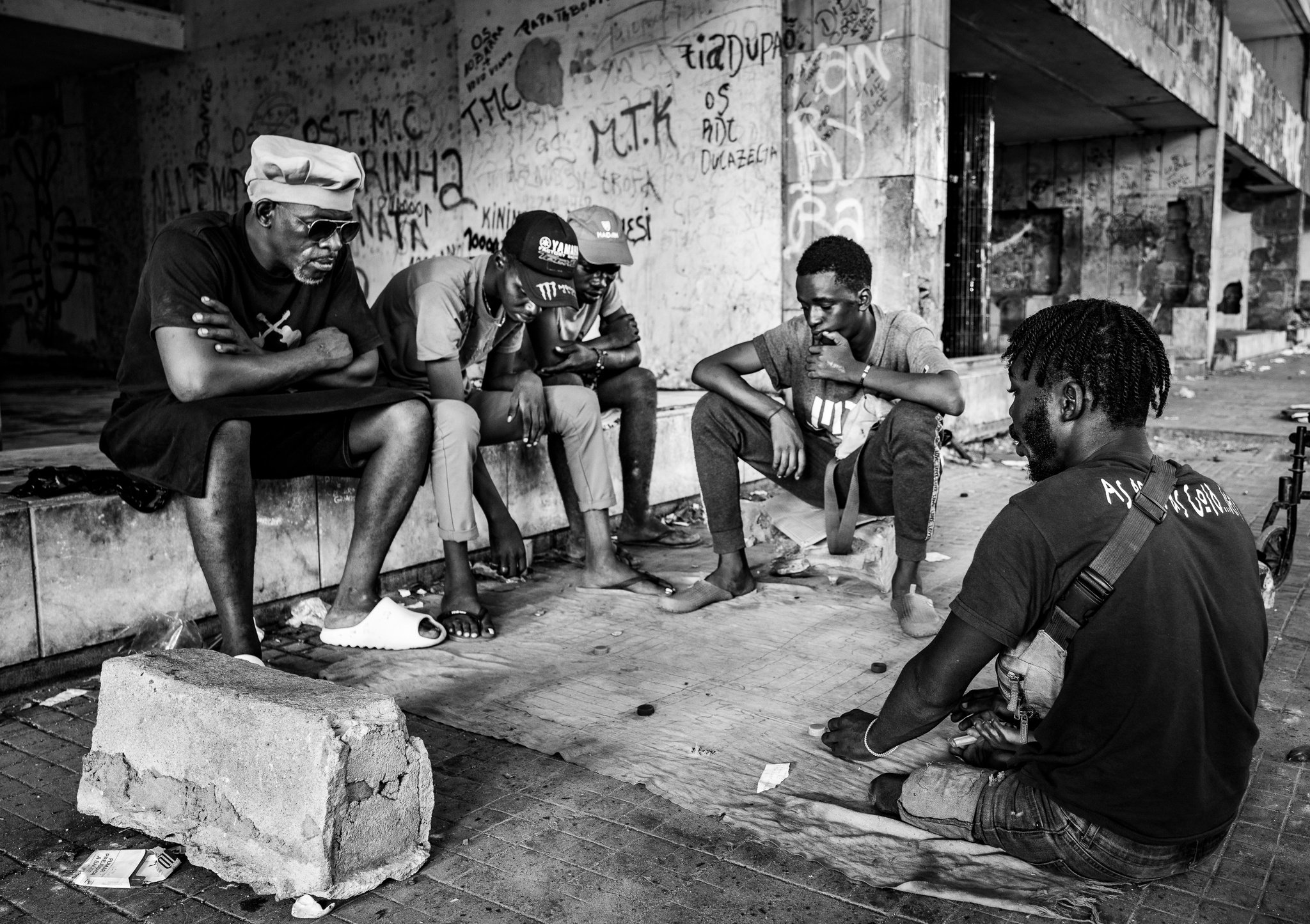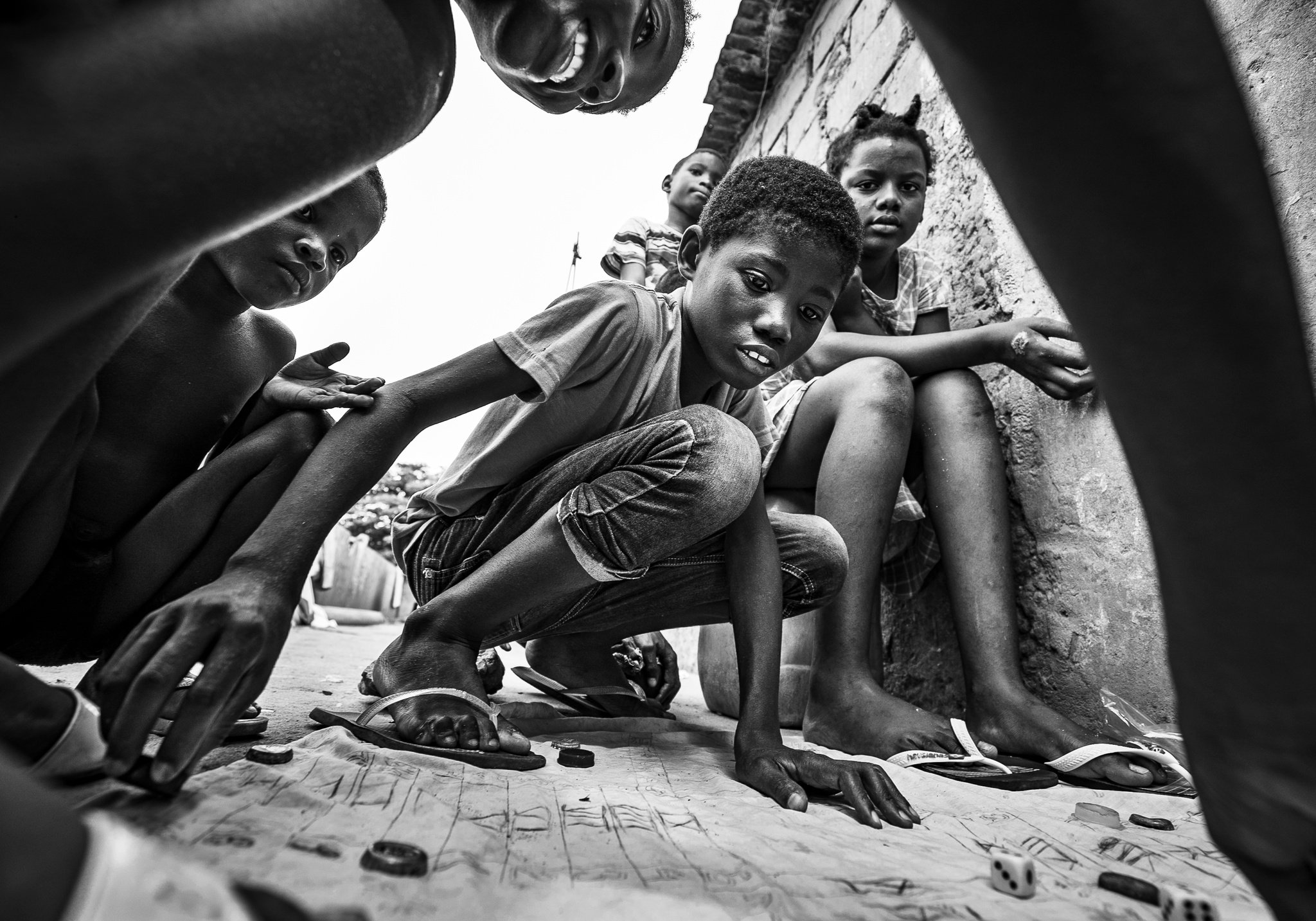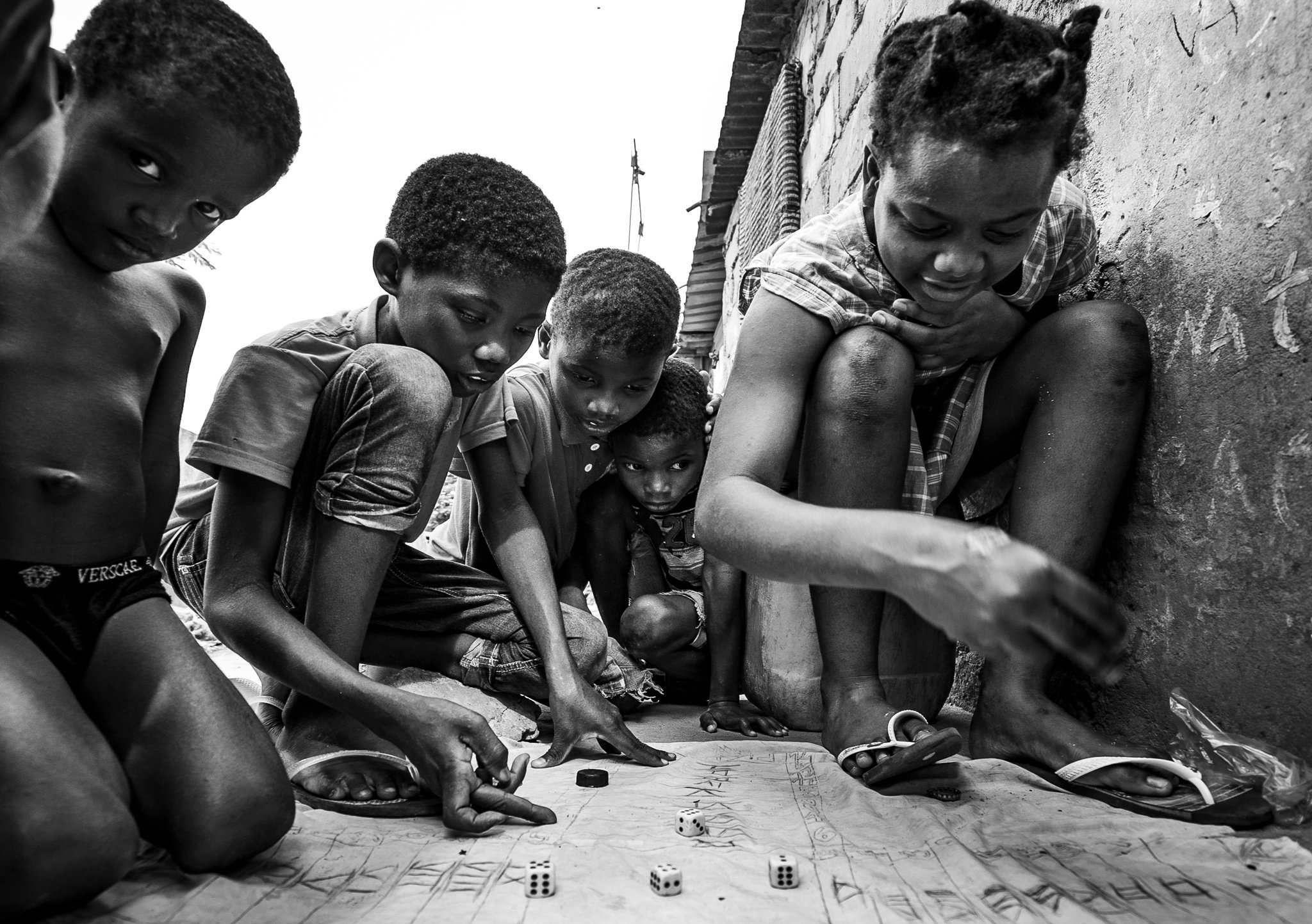Don’t get angry by João Coelho
It's not a manifesto or a statement. "Don't get angry" is the most popular game in Angola. It is played by men, women and children, both in large urban centres and in remote villages. The secret to its success lies in the simplicity of its rules, but above all because what is needed to play it is within everyone's reach. All it takes is drawing a series of numbered squares on the ground or on a wooden board, a pair of dice and the imagination to find the pieces to move, which can be bottle caps, seashells or simple stones.
It can be played in teams and the aim is to get three pieces to the starting point without being caught by the opponents. There are several possible ways to get to the end and achieve victory, so experience and skill in anticipating your opponents' moves and the choice of moves can influence luck or misfortune when the dice are rolled. The rest is pure emotion, and there is a lot of emotion and anger when the opponent wins.
The game "Don't get angry" was originally developed in Germany by Josef Friedrich Schmidt in 1907, who was inspired by the game Ludo. Since it began to be mass-produced in 1914, around 70 million copies of the game have been sold. It is similar to the Indian game Pachisi, the Colombian game Parqués, the American games Parcheesi, Aggravation and Trouble, and the French game Jeu des petits chevaux. The game became very popular during the First World War, when its German publisher sent 3,000 sets to field hospitals to help wounded soldiers spend time during their recovery.
It's unknown how and when the game was introduced in Angola, and the players themselves don't know its origins. They were all born and raised playing or watching "Don't get angry" and the only thing they know is that the game got its name because it is so hotly disputed. It's like a warning beforehand saying something like, "yes, you can play, but be careful, you'll have to take it easy because you might lose!". But what actually happens, game after game, is not that. The game always veers into heated moments of dispute and the moments of calm and meditative silence studying the moves quickly turn into heated discussions or joyful laughter.
When there are only a handful of coins to bet with, the atmosphere becomes even more tense, and irritation is expressed in the strongest and most genuine way when defeat is known. Usually, everything ends well, with promises of a new game for a rematch the next day. But there have been dramatic stories of couples breaking up, injuries, and even deaths caused by "Don't get angry" when a lot of money is at stake or debts are not paid.
Hours and hours of rolling dice and studying the game board have led experienced players to develop their own tics and styles. Hands and feet plays and elaborate body language add a theatrical choreography to the game scenes and make the atmosphere more peculiar and dramatic. They've also developed their own slang to refer to moves or mock their opponents, which is absolutely incomprehensible to anyone who didn't grow up playing or watching "Don't get angry".
Instead of the individualism and social alienation that digital games have provoked in young people in so-called technologically developed societies, here "Don't get angry" remains a game where silence speaks and expressions communicate, where disputes bring people together and the difficulties of everyday life are momentarily forgotten. I wonder if this wasn't also the case for the wounded soldiers in the hospital wards of the First World War. I also wonder how much humanity has lost when it turned almost everything into bits of technology and abandoned a culture and lifestyle made up of real people and real emotions.
